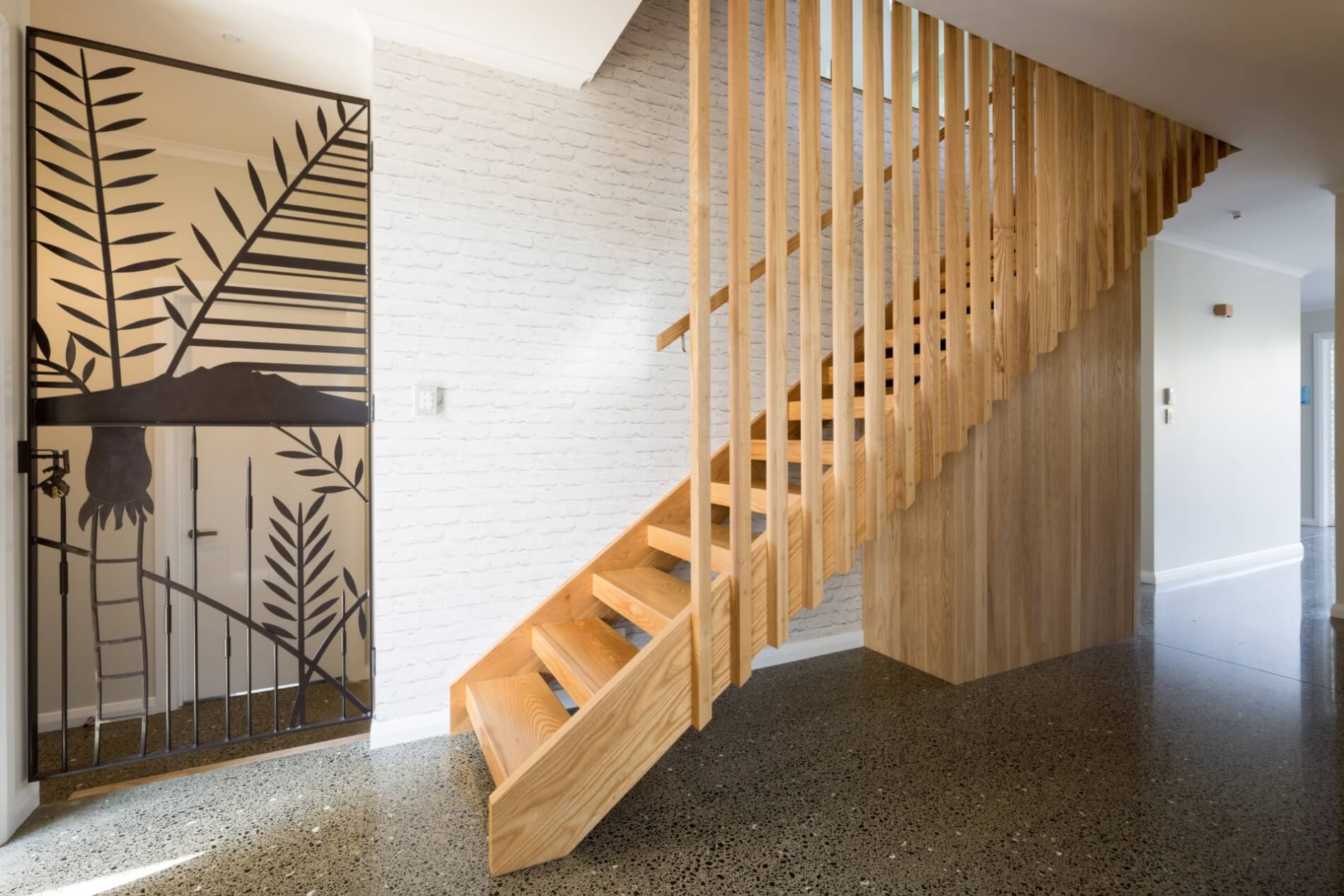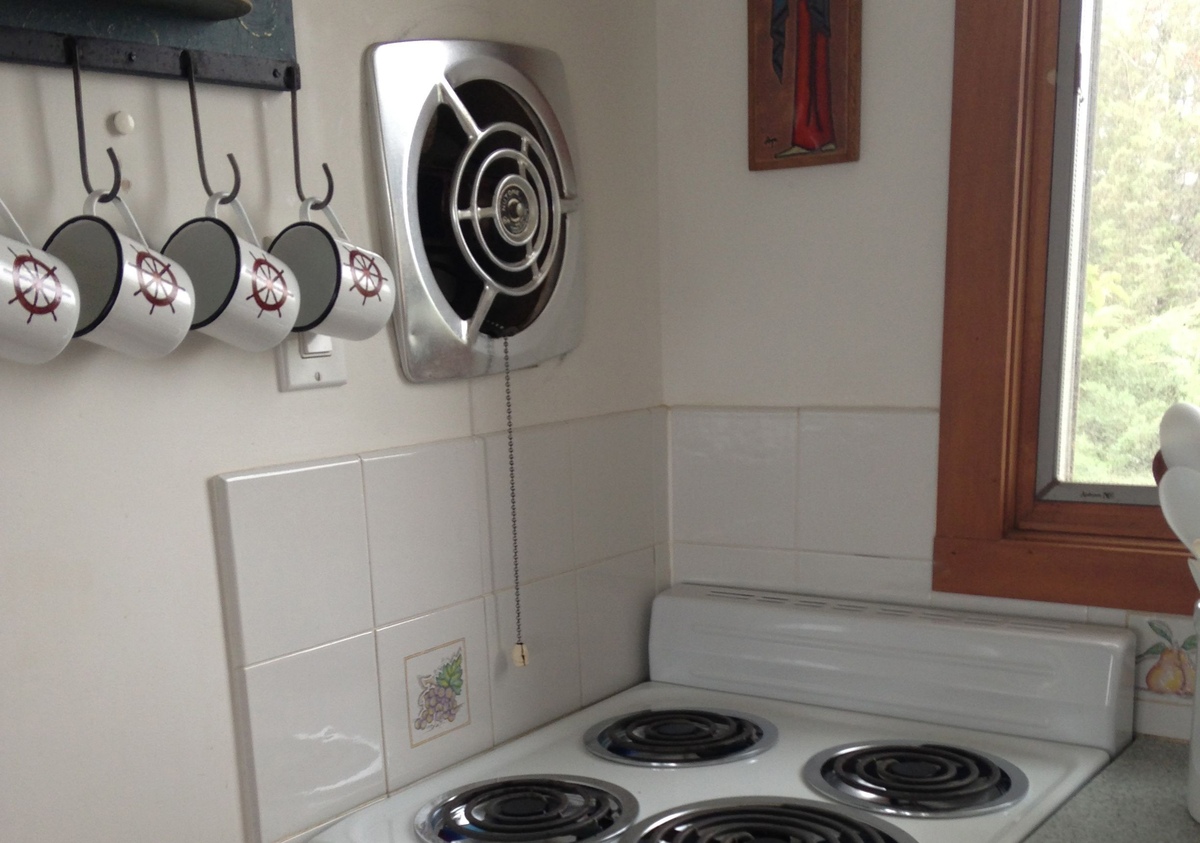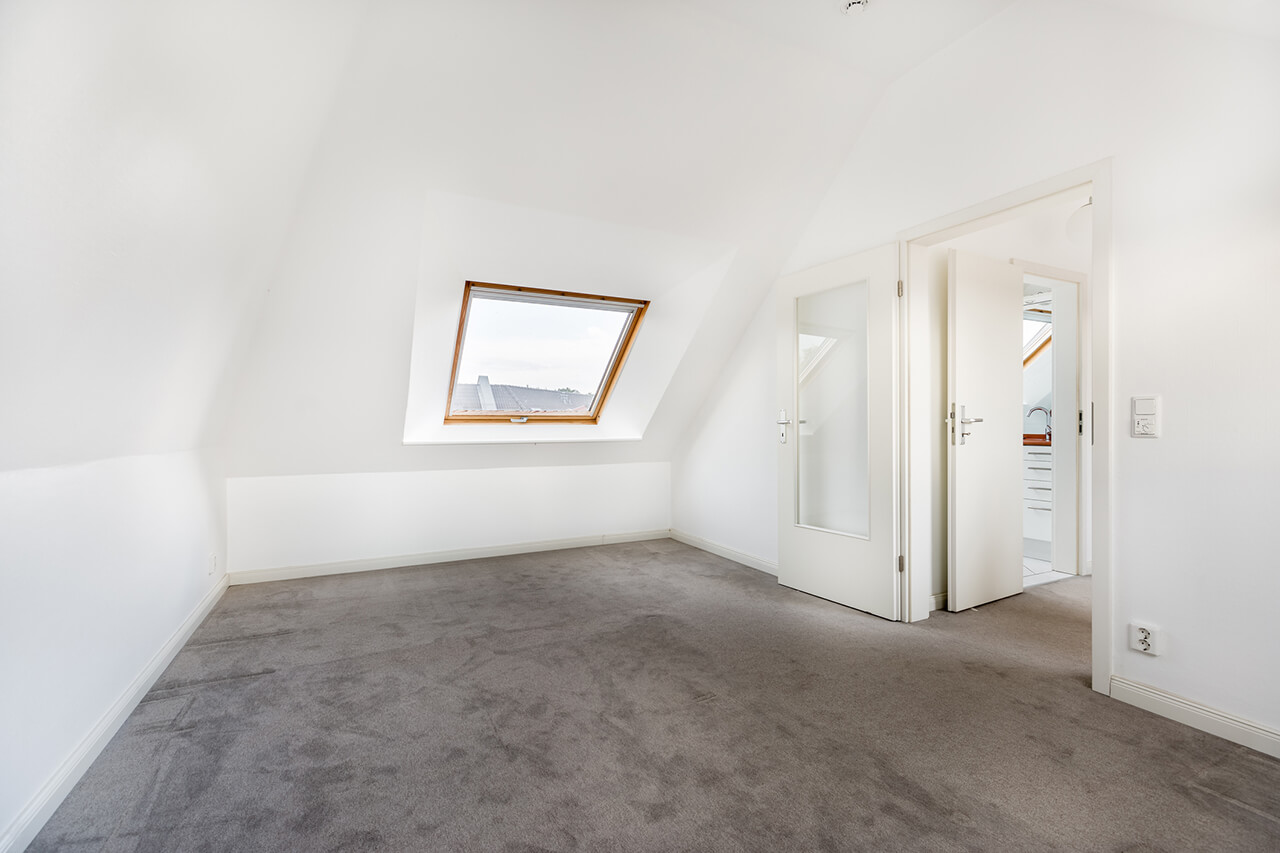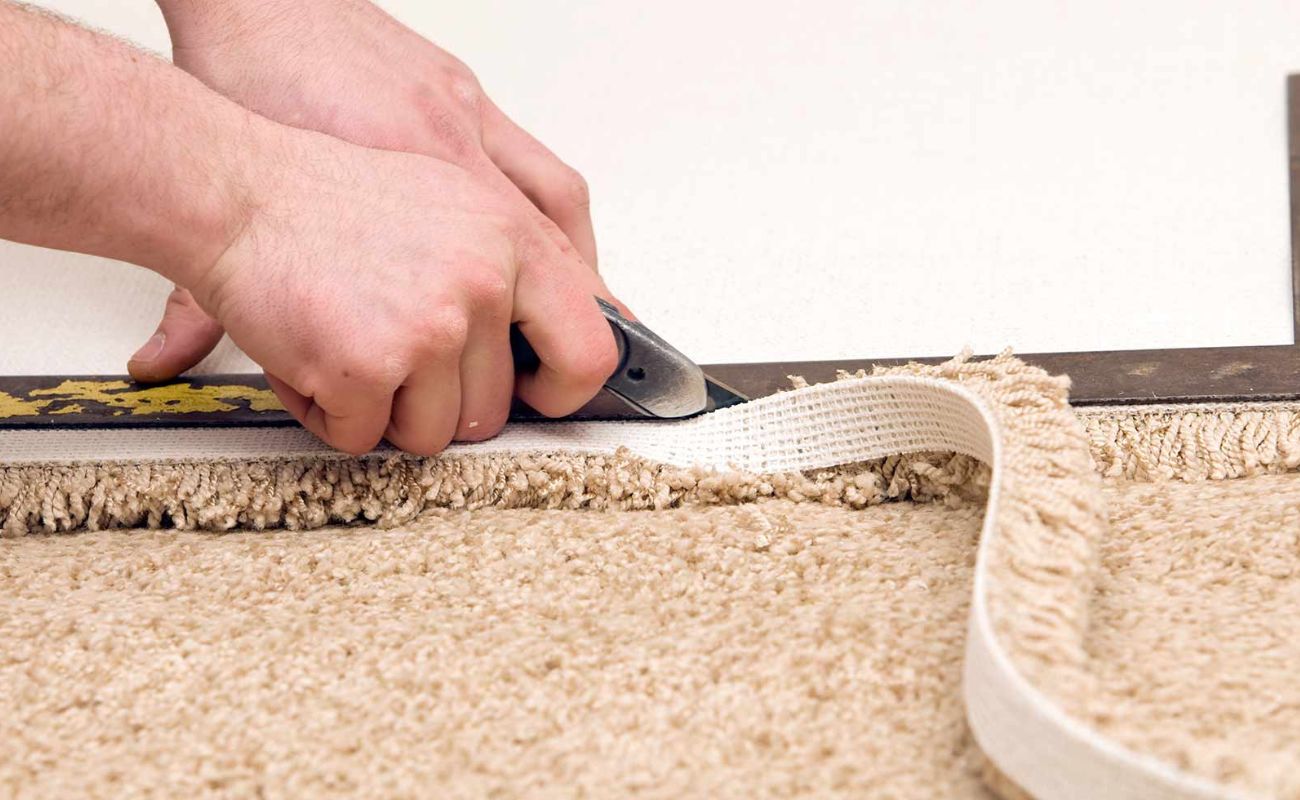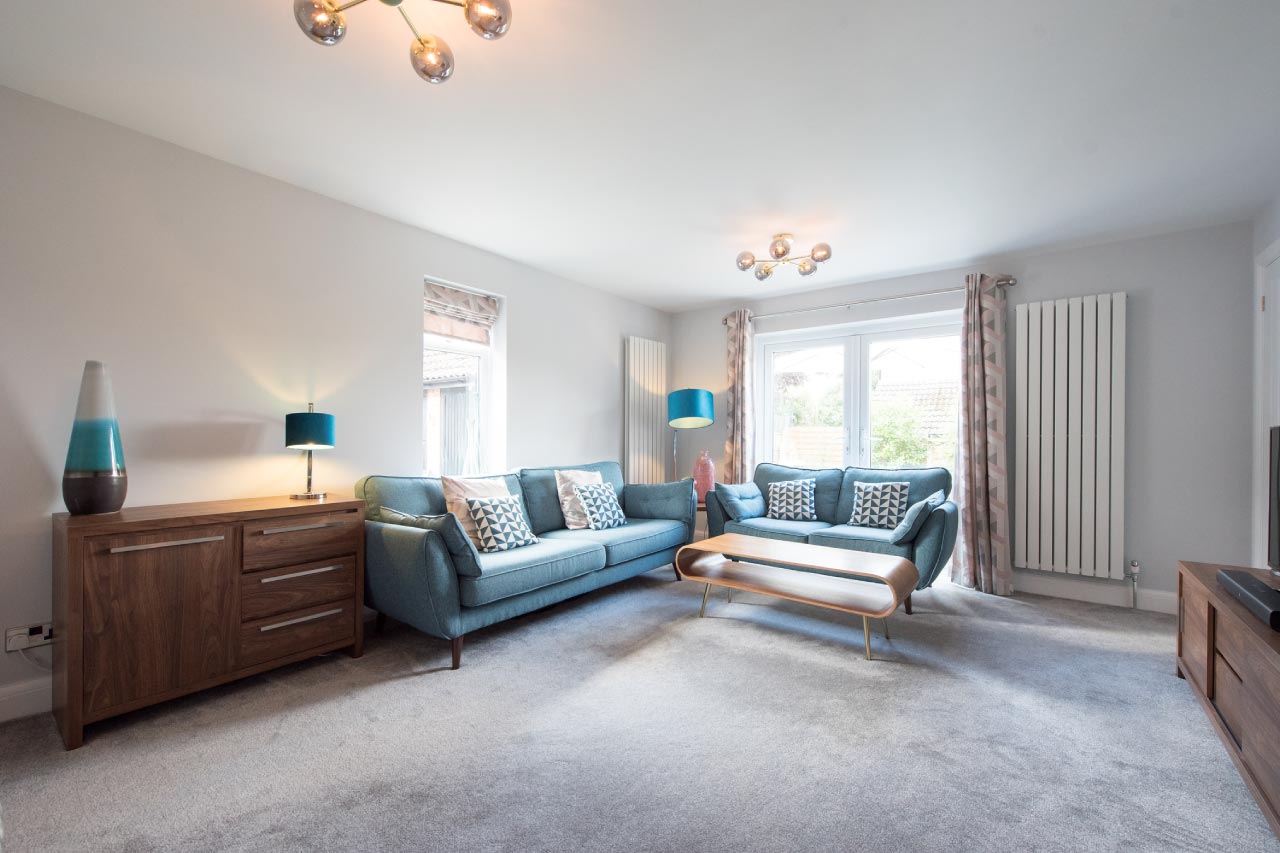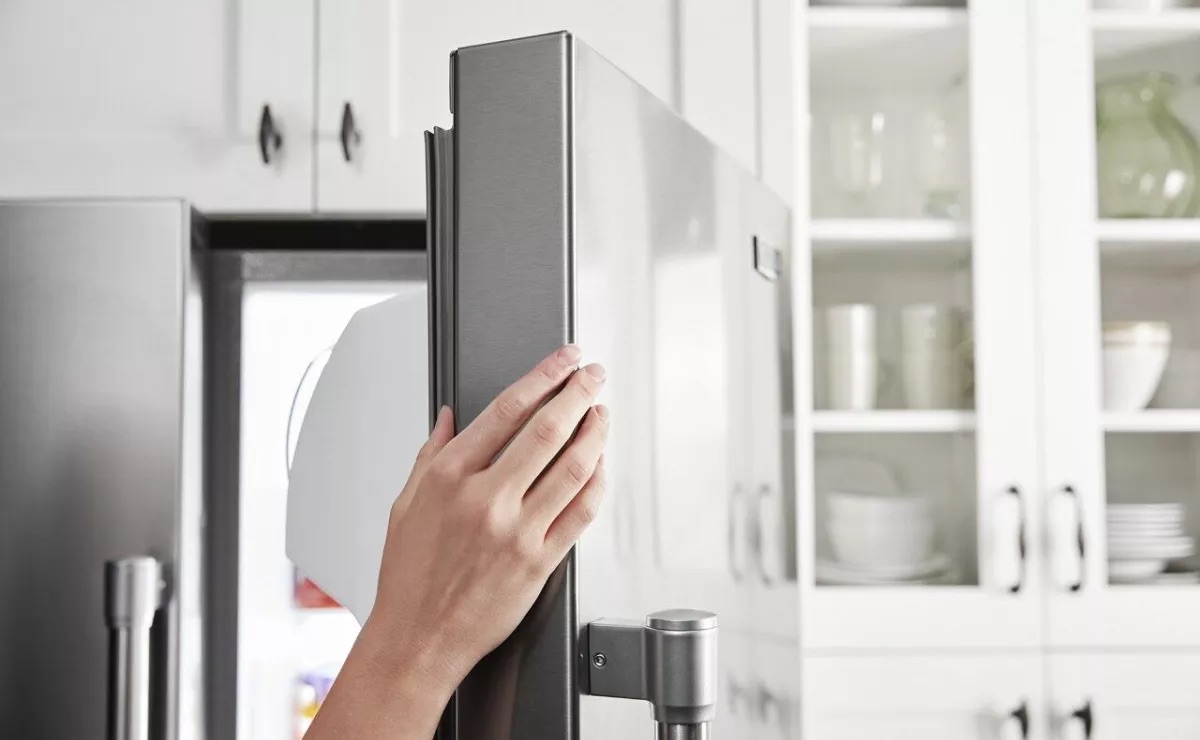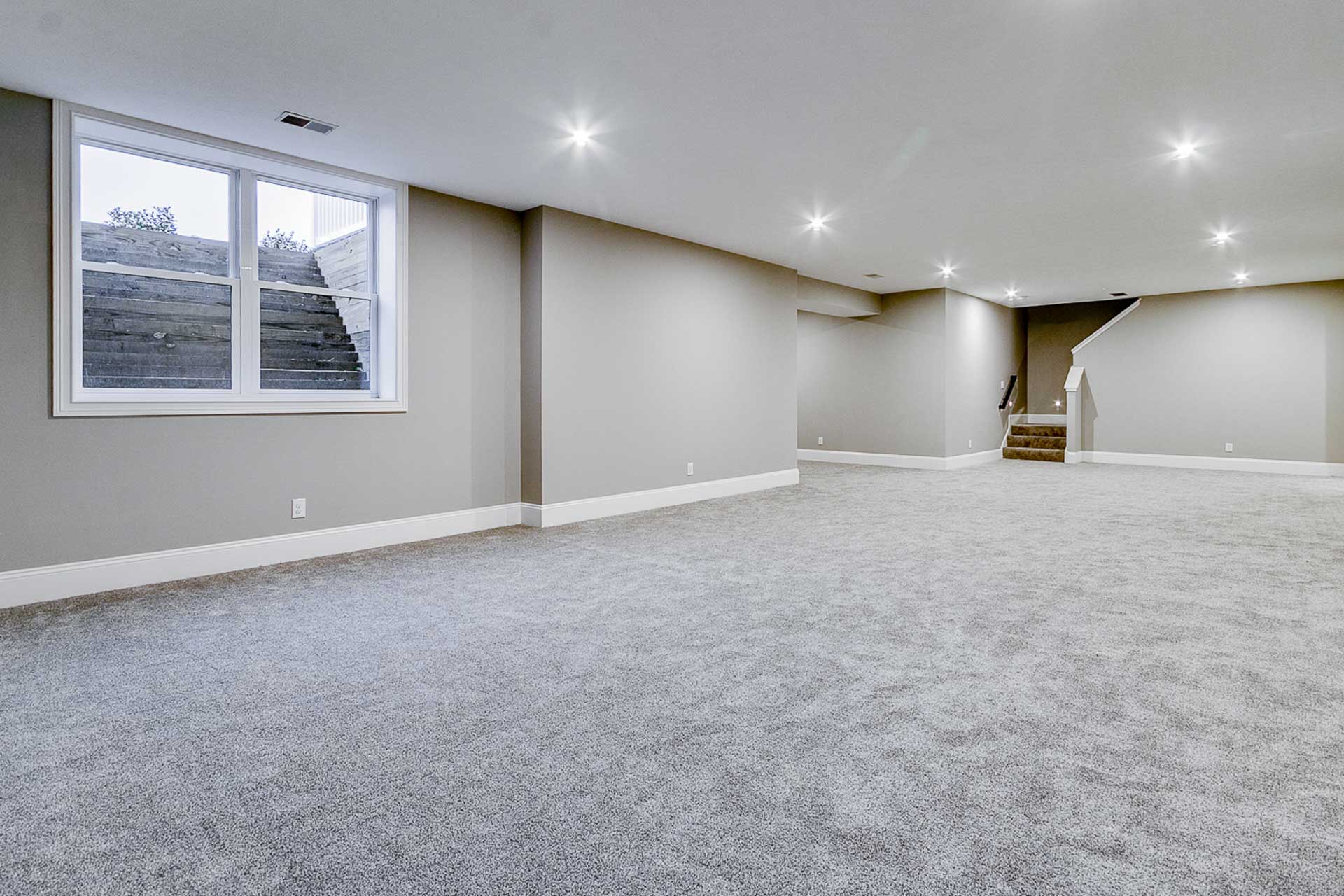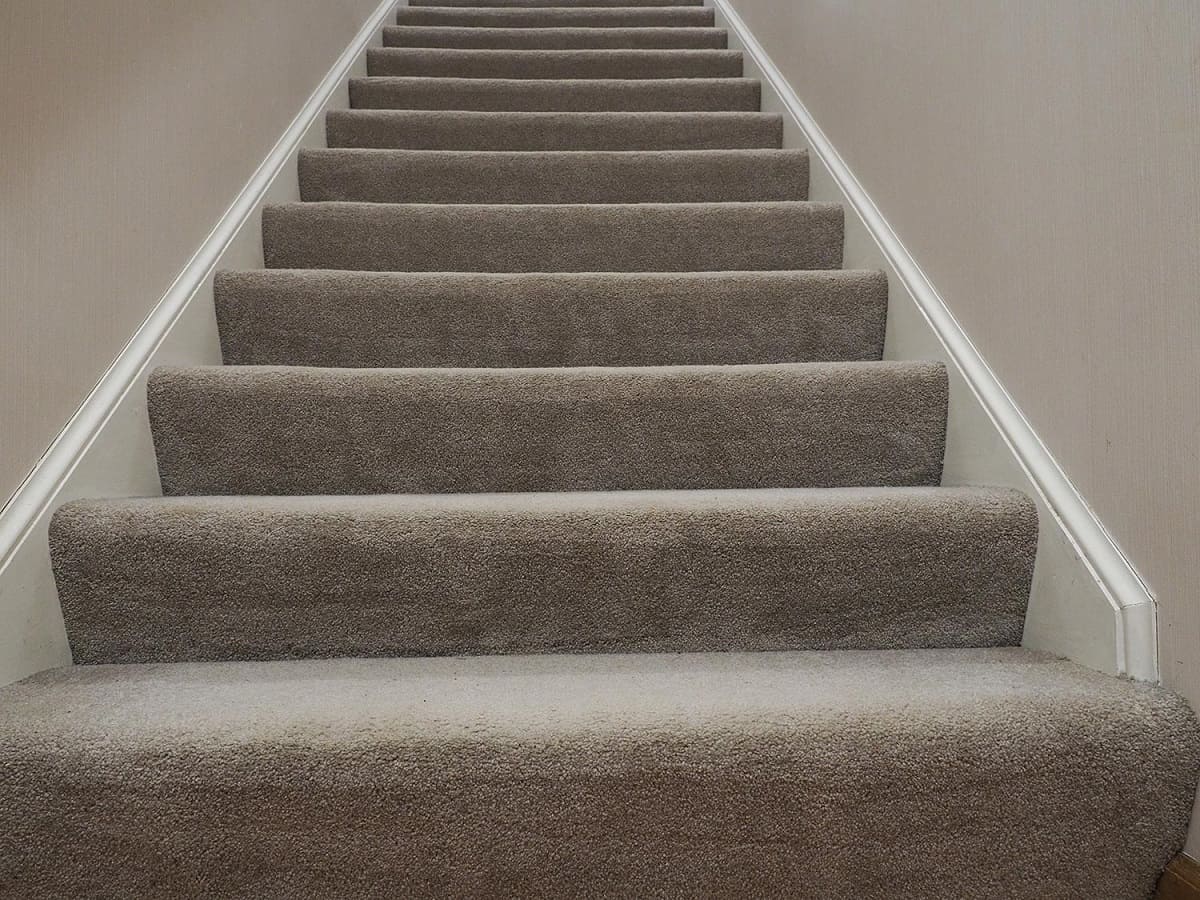

Articles
How Much Does Carpet Reduce Noise
Modified: March 6, 2024
Discover how much carpet can reduce noise in your home with our informative articles. Find out the benefits of carpet for noise reduction and create a quieter living space.
(Many of the links in this article redirect to a specific reviewed product. Your purchase of these products through affiliate links helps to generate commission for Storables.com, at no extra cost. Learn more)
Introduction
When it comes to creating a peaceful and serene environment in our homes and offices, one often overlooked solution is the use of carpet for noise reduction. Carpet has long been valued for its soft and comfortable feel underfoot, but its ability to absorb and reduce noise is a considerable advantage as well. Whether you live in a bustling city or work in a busy office space, excessive noise can be a major distraction and source of stress. Carpet, with its sound-absorbing properties, provides an effective barrier against unwanted noise, creating a more peaceful and relaxing atmosphere.
In this article, we will explore the various aspects of how carpet reduces noise and the factors that contribute to its effectiveness. We will also delve into the different carpet materials, pile types, and padding options that can enhance the noise reduction capabilities of your carpet. Furthermore, we will discuss the importance of testing and measuring noise reduction levels, as well as the numerous benefits that carpet provides beyond noise control.
So, if you’re looking to create a quieter and more serene environment at home or in the office, let’s dive into the world of carpet and discover just how much it can reduce noise.
Key Takeaways:
- Carpet is a Great Noise Reducer
Carpet absorbs sound waves and reduces noise, creating a peaceful environment at home or in the office. It’s like having a cozy, quiet oasis to escape to. - Choose the Right Carpet for Maximum Noise Reduction
Select dense, high-pile carpets with quality padding for optimal noise reduction. It’s like creating a soft, quiet blanket for your floors.
Read more: How To Reduce HVAC Noise
Understanding Noise Reduction
Noise reduction refers to the process of minimizing or eliminating unwanted sounds to create a more peaceful and less disruptive environment. It can have significant benefits for both our physical and mental well-being, as well as our overall productivity and comfort. Understanding how noise reduction works is essential to fully grasp the role of carpet in creating quieter spaces.
Noise travels in waves, and when it reaches a surface, it can be partially absorbed, reflected, or transmitted. The amount of noise that is absorbed versus reflected or transmitted depends on the properties of the surface. Sound-absorbing materials convert sound energy into heat energy, effectively reducing the intensity of the noise.
Carpet, with its dense fibers and cushioning properties, acts as an effective sound absorber. When sound waves hit the carpet, the fibers trap and absorb the energy, preventing it from bouncing back into the room. As a result, the noise is reduced, providing a quieter environment.
In addition to absorbing sound energy, carpet also helps to reduce airborne noise, such as footsteps, voices, or the sound of objects being dropped. The soft and cushioned surface of carpet dampens vibrations, preventing them from traveling through the floor and into other areas. This can be particularly beneficial in multi-story buildings, where noise from upper levels can disturb those below.
It’s important to note that while carpet can significantly reduce noise, it is not a complete soundproofing solution. Some noise will still penetrate through walls, windows, and other surfaces. However, when combined with other soundproofing techniques, such as insulation and acoustic panels, carpet can play a significant role in creating a quieter space.
Factors Affecting Noise Reduction
Several factors come into play when considering the effectiveness of carpet in reducing noise. Understanding these factors will help you make informed decisions when choosing carpet materials and installation methods to maximize noise reduction in your space.
1. Carpet Materials: The type of carpet material used can have a significant impact on its noise reduction capabilities. Generally, carpets with dense fibers and a higher pile density perform better in absorbing sound waves. Materials such as wool, nylon, and polyester are commonly used for their sound-absorbing properties.
2. Carpet Pile: The pile height and density of the carpet can influence its ability to dampen noise. Carpets with a higher pile density and longer pile height tend to absorb more sound than those with a lower pile. This is because the additional fibers provide more surface area to trap and absorb sound waves.
3. Carpet Padding: The quality and thickness of the carpet padding, also known as underlay, play a crucial role in reducing impact and airborne noises. Thicker padding can absorb more sound energy and prevent vibrations from penetrating the floor. Opting for a high-quality carpet padding can significantly enhance the noise reduction capabilities of your carpet.
4. Installation: Proper carpet installation is essential for maximizing noise reduction. A professional installer can ensure that the carpet is tightly secured, minimizing gaps and air pockets that can potentially affect sound absorption. Installing carpet with a quality underlayment and using appropriate adhesives or carpet tacks can also contribute to optimal noise reduction.
5. Room Layout and Furnishings: The layout of the room and the presence of furniture and other objects can impact the acoustics and noise reduction. Soft furnishings, such as curtains, upholstery, and rugs, can complement the noise reduction capabilities of carpet and further dampen sound reflections. Additionally, arranging furniture strategically and using sound-absorbing materials in the room can help minimize noise reverberation.
Considering these factors when choosing carpet materials and planning the layout of your space will help optimize noise reduction and create a more peaceful environment. Consulting with professionals in the carpet industry can also provide valuable insights and guidance in selecting the right carpeting for your specific needs.
Carpet Materials and Noise Reduction
The choice of carpet material can have a significant impact on its ability to reduce noise. Different carpet materials have varying levels of sound-absorbing properties, making it important to select the right material for optimal noise reduction in your space.
1. Wool: Wool is a natural fiber known for its excellent acoustic properties. It has a dense and tightly packed structure that effectively absorbs sound waves, reducing noise levels. Wool carpet is particularly effective in absorbing high-frequency sounds, making it a popular choice for areas that require minimal noise disruption, such as bedrooms, libraries, and home offices.
2. Nylon: Nylon is a synthetic fiber widely used in carpet manufacturing due to its durability and versatility. While nylon carpets may not have the same level of sound-absorbing capabilities as wool, they still offer substantial noise reduction benefits. The key is to choose a dense nylon carpet with a higher pile density for better sound absorption.
3. Polyester: Polyester is another synthetic fiber commonly used in carpet production. It has good sound-absorbing properties and is often used in residential applications. Polyester carpets can effectively reduce impact noise, such as footsteps and dropped objects, as well as airborne noises by absorbing sound waves.
4. Blends: Many carpets are made from a combination of different fibers, such as a wool-nylon blend or a polyester-nylon blend. These blends offer a balance between the sound absorption of natural fibers and the durability of synthetic fibers. They can be a great choice for areas where both noise reduction and durability are important factors.
It’s worth noting that not all carpet materials have the same level of noise reduction capabilities. When selecting carpet materials, consider the specific noise reduction needs of your space. If noise reduction is a top priority, leaning towards wool or denser synthetic fibers can provide the best results.
In addition to the material itself, the thickness and density of the carpet fibers also influence its noise reduction capabilities. Thicker and denser carpets generally have better sound absorption properties, so keep this in mind when choosing the carpet pile.
Overall, by selecting the right carpet material and considering factors such as pile density and thickness, you can enhance the noise reduction capabilities of your carpet and create a more comfortable and peaceful environment.
Carpet Pile and Noise Reduction
The pile of carpet refers to the height and density of the fibers. It plays a crucial role in noise reduction, as different pile types have varying levels of sound-absorbing properties.
1. Low Pile Carpets: Low pile carpets have shorter fibers that are tightly woven together. While they may not provide the same level of cushioning and softness as higher pile options, they excel in noise reduction. The dense construction of low pile carpets effectively absorbs sound waves, minimizing echo and reverberation. They are commonly used in high-traffic areas, such as offices or commercial spaces, where noise reduction is a priority.
2. Medium Pile Carpets: Medium pile carpets strike a balance between comfort and noise reduction. With slightly longer fibers, they offer a softer feel underfoot while still providing effective sound absorption. Medium pile carpets work well in areas where both noise reduction and comfort are desired, such as living rooms or bedrooms.
3. High Pile Carpets: High pile carpets have longer and looser fibers, creating a plush and luxurious look. While they may not offer the same level of noise reduction as low or medium pile carpets, they can still contribute to reducing noise levels to some extent. The longer fibers provide additional surface area to absorb sound waves and prevent excessive noise reflections.
When it comes to noise reduction, the density of the carpet pile is equally important. A densely packed pile structure enhances sound absorption, preventing noise from bouncing back into the room. Carpets with a higher pile density, regardless of the pile height, tend to offer better noise reduction capabilities.
In addition to the pile height and density, the construction of the carpet fibers can also affect noise reduction. For example, cut pile carpets have fibers that are cut at the tips, creating a softer and more luxurious feel. Loop pile carpets, on the other hand, have uncut loops of fibers, providing durability and a distinct pattern. Both types can contribute to noise reduction, but the specific construction may impact the overall performance.
It’s important to consider the specific needs of your space when selecting the appropriate carpet pile. If noise reduction is a top priority, opting for a low pile carpet with a high density can provide optimal results. However, if comfort and aesthetics are also important factors, a medium or high pile carpet may be a suitable choice.
Ultimately, finding the right balance between noise reduction, comfort, and aesthetic appeal will help you select the best carpet pile for your specific requirements.
Carpet can reduce noise by absorbing and dampening sound waves, making it a great choice for reducing noise in a room. Thicker and denser carpets provide better noise reduction.
Read more: How To Reduce Construction Noise
Carpet Padding and Noise Reduction
When it comes to maximizing noise reduction, the role of carpet padding, also known as underlay, cannot be overlooked. Carpet padding is a layer of cushioning material that is installed between the carpet and the subfloor. It provides numerous benefits, including enhancing the noise reduction capabilities of the carpet.
1. Impact Noise Reduction: One of the main advantages of carpet padding is its ability to reduce impact noise. Impact noise refers to sounds generated from footsteps, dropping objects, or moving furniture. The cushioning effect of the padding absorbs the energy created by these impacts, preventing it from traveling through the floor and creating unwanted noise. Thicker and denser padding materials, such as rebond foam or rubber, are particularly effective in minimizing impact noise.
2. Airborne Noise Reduction: In addition to impact noise, carpet padding also helps reduce airborne noise. Airborne noise includes sounds that travel through the air, such as voices, television noise, or music. The padding acts as an additional layer of insulation, absorbing some of the sound waves that would otherwise penetrate through the floor or reverberate within the room. The thickness and density of the padding play a significant role in its ability to absorb airborne noise.
3. Sound Insulation: Carpet padding not only reduces noise within the room but also provides some level of sound insulation. It helps to control the transmission of sound from one room to another, making it particularly useful in multi-story buildings or shared living spaces. The padding helps to dampen vibrations that can carry noise through the floor and walls, contributing to a quieter environment overall.
4. Comfort and Durability: In addition to noise reduction benefits, carpet padding also enhances the comfort and durability of the carpet itself. The cushioning effect of the padding provides a softer and more comfortable feel underfoot, making walking or standing on the carpet more enjoyable. Furthermore, the padding acts as a buffer, protecting the carpet from wear and tear and extending its lifespan.
When selecting carpet padding for noise reduction, it’s important to consider the material, thickness, and density. Different padding materials, such as foam rubber, felt, or rebond foam, have varying levels of sound-absorbing properties. Thicker padding generally offers better noise reduction, but it is essential to ensure that it is compatible with the carpet and follows manufacturer recommendations for optimal performance.
Overall, carpet padding plays a crucial role in maximizing noise reduction in your space. By selecting the appropriate padding material and thickness, you can create a more peaceful and comfortable environment while also extending the lifespan of your carpet.
Testing and Measuring Noise Reduction
When it comes to assessing the effectiveness of carpet in reducing noise, it’s important to rely on proper testing and measuring techniques. This ensures accurate and reliable results to guide your decision-making process.
Several methods can be used to test and measure the noise reduction capabilities of carpet:
1. Impact Insulation Class (IIC): The IIC rating measures the impact sound transmission through a floor-ceiling assembly. It evaluates how well the carpet and underlying materials dampen impact noise, such as footsteps or dropped objects. Higher IIC ratings indicate better impact noise reduction. This rating is commonly used in multi-story buildings or areas where impact noise is a significant concern.
2. Sound Transmission Class (STC): The STC rating evaluates the ability of a material to reduce airborne sound transmission. It measures the sound insulation properties of the entire floor-ceiling assembly. This rating is relevant for areas where airborne noise, such as voices or music, needs to be minimized. Higher STC ratings indicate better sound insulation.
3. Noise Reduction Coefficient (NRC): The NRC measures the sound absorption capability of a material. It indicates the percentage of sound that is absorbed rather than reflected. The higher the NRC rating, the more sound the material absorbs. This measurement is particularly relevant for open spaces, such as offices or conference rooms, to control excessive noise reflections.
4. Field Testing: In addition to standardized tests, field testing can provide more accurate results specific to your environment. Sound meters can be used to measure the sound levels before and after the installation of the carpet. This method allows you to assess the actual noise reduction achieved and make any necessary adjustments to optimize the acoustic performance.
When testing and measuring noise reduction, it’s essential to consider factors beyond just the carpet itself. The underlayment, subfloor, and overall room construction can all influence the results. Therefore, it is recommended to consult with professionals experienced in acoustic testing to ensure accurate measurements and interpretation of the data.
By utilizing proper testing and measuring techniques, you can make informed decisions about the selection and installation of carpet to achieve the desired noise reduction levels in your space.
Benefits of Carpet for Noise Reduction
Carpet offers several benefits when it comes to reducing noise in residential and commercial spaces. Beyond the aesthetic appeal and comfort it provides, carpet’s sound-absorbing properties have a significant impact on creating quieter and more peaceful environments. Here are some key benefits of carpet for noise reduction:
1. Improved Acoustic Comfort: The dense fibers of carpet act as a sound absorber, reducing echoes and reverberation in a room. This creates a more comfortable acoustic environment, especially in areas with hard surfaces like tile or hardwood floors. Carpet helps to dampen noise reflections, making conversations clearer, music more enjoyable, and reducing overall noise disruption.
2. Enhanced Privacy: Carpet plays a role in enhancing privacy by reducing the transmission of sound between spaces. Whether in office buildings, apartments, or hotel rooms, carpet helps to minimize the transfer of sound from one room to another. This is especially important in shared or multifamily dwellings, where privacy and peace are crucial factors for a harmonious living environment.
3. Reduced Impact Noise: Carpet provides excellent impact noise reduction, absorbing the sound generated from footsteps, dropped objects, or moving furniture. The cushioning effect of carpet and the use of quality padding help to minimize these noises, providing a quieter and less disruptive environment, particularly in high-traffic areas such as hallways or staircases.
4. Noise Control in Multi-Story Buildings: In multi-story buildings, carpet plays a vital role in reducing noise transmission between floors. It acts as a barrier, preventing sound vibrations and impact noise from traveling through the floor structure. This is beneficial in apartments, condominiums, and commercial buildings, where noise from upper-level units can disturb those below.
5. Improved Work and Learning Environments: In offices and educational institutions, excessive noise can hinder productivity and concentration. Carpet helps to create a quieter workspace or classroom, allowing for better focus, communication, and learning. It reduces distracting background noise, creating an environment that is more conducive to effective work and study.
6. Enhanced Safety: Beyond noise reduction, carpet can also provide additional safety benefits. It cushions falls, reducing the risk of injury, particularly in areas where slips and trips are more likely to occur. This is particularly valuable in environments where children or elderly individuals are present.
Overall, carpet’s noise reduction capabilities contribute to creating a more peaceful, comfortable, and productive environment. By absorbing sound, reducing noise reflections, and minimizing impact noise, carpet enhances both the aesthetic appeal and acoustic comfort of a space.
Conclusion
Carpet is not only a visually pleasing and comfortable flooring option, but it also serves as an effective solution for reducing noise in homes, offices, and other spaces. By absorbing sound waves and dampening vibrations, carpet creates a quieter and more peaceful environment, free from the distractions and stress caused by excessive noise.
Throughout this article, we have explored the various aspects of carpet’s noise reduction capabilities. We have discussed the factors that impact its effectiveness, including carpet materials, pile types, and padding options. We have also delved into the importance of testing and measuring noise reduction and the numerous benefits that carpet provides beyond noise control.
When choosing carpet for noise reduction, it is essential to consider factors such as the material, pile height and density, and the quality of the padding. By selecting the right combination of these elements, you can optimize the noise reduction capabilities of your carpet and create a more serene and comfortable space.
Remember, carpet is not a complete soundproofing solution, and other factors such as the construction of the room and the presence of furnishings can influence noise levels. However, when used in conjunction with other soundproofing techniques, carpet can significantly contribute to a more peaceful environment.
Whether you’re looking to create a quieter home, a productive office, or a comfortable educational space, carpet has proven to be an effective solution for reducing noise. It not only enhances acoustic comfort but also provides additional benefits such as enhanced privacy, reduced impact noise, and improved safety.
So, if you’re seeking a flooring option that harmonizes aesthetics, comfort, and noise reduction, consider the many benefits that carpet has to offer. With its sound-absorbing properties, carpet can transform your space into a tranquil oasis, allowing you to fully enjoy the peace and quiet that we all crave in our daily lives.
Frequently Asked Questions about How Much Does Carpet Reduce Noise
Was this page helpful?
At Storables.com, we guarantee accurate and reliable information. Our content, validated by Expert Board Contributors, is crafted following stringent Editorial Policies. We're committed to providing you with well-researched, expert-backed insights for all your informational needs.


